Rakkojae Seoul Bukchon Hanok Hotel [Korea Qaulity] / 락고재 서울 북촌 한옥호텔 [한국관광 품질인증/Korea Quality]
8.5Km 2021-10-27
49-23, Gyedong-gil, Jongno-gu, Seoul
The main building in Seoul is a traditional Korean cultural space renovated by Jeong Yeong-jin, a human cultural asset, from a hanok with a history of 130 years. Traditional flags, fences, pavilions, chimneys, and jangdokdae are holding the blue sky with pine trees, creating a harmonious Korean-style house. Passing through the elegant tall gate, as you see the jangdokdae, a small but clean hanok will be revealed, and the pine trees and bamboo trees added to the natural beauty, while the loving Gomusin placed on the stone brings back beautiful memories.
Rakkojae is a place where the customs of the aristocrats in the past are melted in various places, creating a wonderful atmosphere by carefully reviving the pavilion, ponds, and daecheongmaru. Especially, Daecheongmaru adds the beauty of the margins of hanok to give you a sense of refreshment. As the old scholars did, sitting on the pavilion makes the time flow slow and the wind that passes over the Sotdae feels special.
In addition, you can experience the beauty of Korean tradition with various programs such as tea ceremony, jjimjilbang, royal robes, and kimchi-making along with traditional Korean food. Rakkojae's accommodation, reminiscent of a nobleman's house in the Joseon Dynasty, is well-kept and comfortable that it is comparable to a luxury hotel, and the natural jade-covered ondol rooms and firewood jjimjilbangs made of cheongito provide a healthy journey for many guests.
Mercado Gwangjang (광장시장)
8.5Km 2024-05-17
Changgyeonggung-ro 88, Jongno-gu, Seúl.
Eunseong Hoejip (은성회집)
8.5Km 2021-03-29
88, Changgyeonggung-ro, Jongno-gu, Seoul
+82-2-2267-6813
You can enjoy Daegu maeuntang (fish stew), which is perfect for hangover. This restaurant's signature menu is sicy codfish stew. This Korean dishes restaurant is located in Jongno-gu, Seoul.
Dahmsojung [Korea Quality] (담소정[한국관광 품질인증/Korea Quality])
8.5Km 2025-07-18
16-2, Bukchon-ro 9-gil, Jongno-gu, Seoul
Dahmsojung, meaning ‘a house full of laughs’, is a hanok guesthouse that provides sincere services and comfortable relaxation. Located in the middle of Seoul’s city center, this hanok hotel-class guesthouse was built using traditional hanok construction materials including the 200-years-old Korean land pine from Gyeongju, and clay for rooms. The owner originally bought the land to build the residential area for the family, but wishing to promote the charms of the hanok building to foreigners, it was opened as a guesthouse in October 2012. This hanok guesthouse with modern elements is decorated with refined interior items. It provides a special breakfast that consists of steamed rice wrapped in a lotus leaf and tasty side dishes without any artificial seasonings. All the vegetables used for the meals are organic and cultivated by the owner. It also uses refined objects including high quality tableware, bedding (cotton bedclothes with colored stripes), authentic ceramics, lacquered painting by an artisan, and artistic living items. It carries out a cleaning and disinfection process every day as well. In particular, Hinoki cypress with a subtle scent was used for the bathroom. The home bar was installed especially for foreign guests who find it difficult to sit on the floor in the kitchen. These detailed consideration and decorations have attracted many guests including foreign diplomats, VIPs, and so on.
It also operates a hands-on programs including ‘calligraphy’ and ‘making a fan’ that are held on the main floored room and are popular among foreign guests. Dahmsojung offers guests sophisticated services and comfortable facilities with a clean and traditional atmosphere that attracts many domestic and foreign guests.
Museo Nacional de Música Tradicional Gugak (국립국악박물관)
8.5Km 2021-03-31
Nambusunhwan-ro 2364, Seocho-gu, Seúl.
El Museo Nacional de Música Tradicional se inauguró en 1995 y se encuentra dentro del Centro Nacional de Artes Tradicionales Interpretativas de Corea. En este lugar se halla en exhibición todo lo relativo a la música tradicional de Corea. Cuando entre a él y se detenga en el medio de la sala central de la primera planta, verá en vitrinas los instrumentos tradicionales cuidadosamente preservados. De los elementos expuestos, verá la pyeonjong (campana de oro) y el pyeongyeong (instrumento de percusión de piedra), y varios tipos de tambores que fueron instrumentos interpretados en las cortes reales y servicios de conmemoración. Mientras escucha sonar la música tradicional, intente dirigirse a la Sala de Historia de la Música Tradicional. Allí hay alrededor de 70 artículos en exhibición. Podrá observar el retrato del anciano músico Bak Yeon y hallar muchas otras pinturas que describen la ejecución de la música tradicional. En la Sala de Exhibición de Instrumentos se encuentran los que fueron ejecutados en música tradicional de Corea. En esta sala, hay también instrumentos norcoreanos y extranjeros en exposición. Asimismo, podrá mirar material gráfico de las interpretaciones musicales. La Sala Myeonginsil es donde se encuentran exhibidas las pertenencias de importantes artistas. Podrá contemplar sus instrumentos, libros, anteojos y demás objetos personales.
Centro Nacional Gugak (국립국악원)
8.5Km 2023-06-29
Nambusunhwan-ro 2364, Seocho-gu, Seúl.
El Centro Nacional Gugak es la institución reguladora establecida para preservar y promover las artes escénicas tradicionales coreanas. El centro puede albergar todo tipo de artes escénicas, como música palaciega, música de la corte y otros géneros, incluyendo las grandes producciones de changgeuk (dramas musicales coreanos). Esta institución fue fundada originalmente en la ciudad de Busan, pero se trasladó a su ubicación actual en Seúl en 1987. Sin embargo, ha abierto sedes locales en Namwon (1992), Jindo (2004) y Busan (2008).
Paseo bajo la Luz de la Luna en el Palacio Changdeokgung (창덕궁 달빛기행)
8.5Km 2025-03-14
Yulgok-ro 99, Jongno-gu, Seúl.
1522-2295
Construido en un principio como una residencia real, el palacio Changdeokgung se convirtió en el principal lugar de gobierno durante la dinastía Joseon después de que el palacio Gyeongbokgung fuese destruido durante la invasión japonesa del siglo XVI. Además de su relevancia política, el palacio es reconocido por su arquitectura y su bello entorno natural. En 1997 la Unesco designó al palacio Changdeokgung como Patrimonio Cultural de la Humanidad. Como parte del proyecto de creación de nuevos espacios, el Paseo Bajo la Luz de la Luna del Palacio Changdeokgung ofrece una oportunidad única de presenciar la belleza de los palacios coreanos. Este recorrido comienza en la puerta Donhwamun y continúa durante unas dos horas a través de los pabellones Injeongjeon y Nakseonjae, y el Jardín Huwon.
Geumdwaeji Sikdang (금돼지식당)
8.5Km 2024-08-08
149 Dasan-ro, Jung-gu, Seoul
The Place Seoul (traditional Korean-style guesthouse) (복합한옥공간 곳)
8.5Km 2025-06-02
52-11, Gyedong-gil, Jongno-gu, Seoul
The Place Seoul in Gye-dong, Jongno-gu, Seoul, is a meeting place of traditional and modern Korea. It has a yard with a beautiful 80 year-old dogwood tree, and a small garden in which guests can enjoy the passage of the seasons. The Place Seoul is an environment-friendly place which uses eco-friendly consumables such as toilet paper and shampoo. Breakfast is simple and healthy. There are many good cafes in nearby Bukchon, and local tourist attractions include the National Palace Museum of Korea and the National Museum of Modern and Contemporary Art.
Uga Yukhoe Bulgogi (우가육회불고기)
8.5Km 2021-03-19
198-2, Jong-ro, Jongno-gu, Seoul
+82-2-2286-6656
This Korean cuisine is located near Jongno 5(o)ga Station, Seoul. It is located at Yukhoe Alley in Gwangjang Market, one of Korea’s representative traditional markets. The representative menu is sliced raw beef.
![Rakkojae Seoul Bukchon Hanok Hotel [Korea Qaulity] / 락고재 서울 북촌 한옥호텔 [한국관광 품질인증/Korea Quality]](http://tong.visitkorea.or.kr/cms/resource/40/2698240_image2_1.jpg)

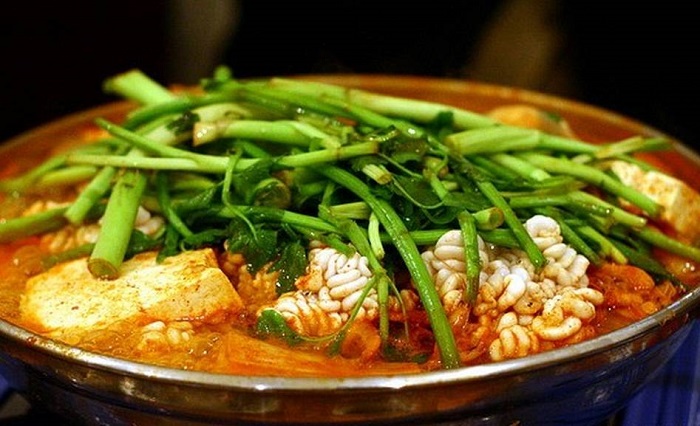
![Dahmsojung [Korea Quality] (담소정[한국관광 품질인증/Korea Quality])](http://tong.visitkorea.or.kr/cms/resource/20/2684320_image2_1.jpeg)
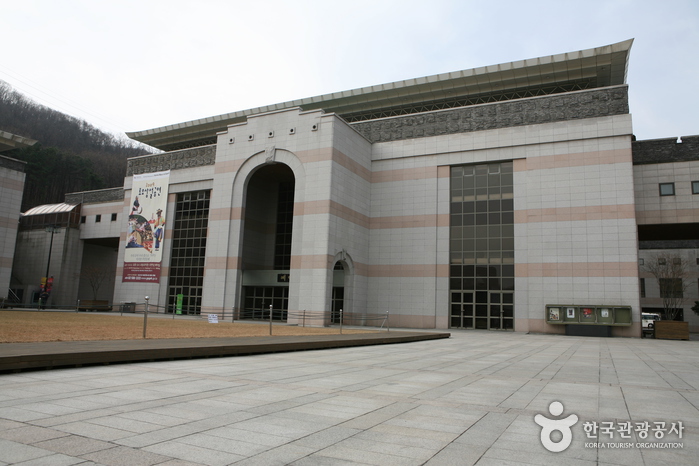
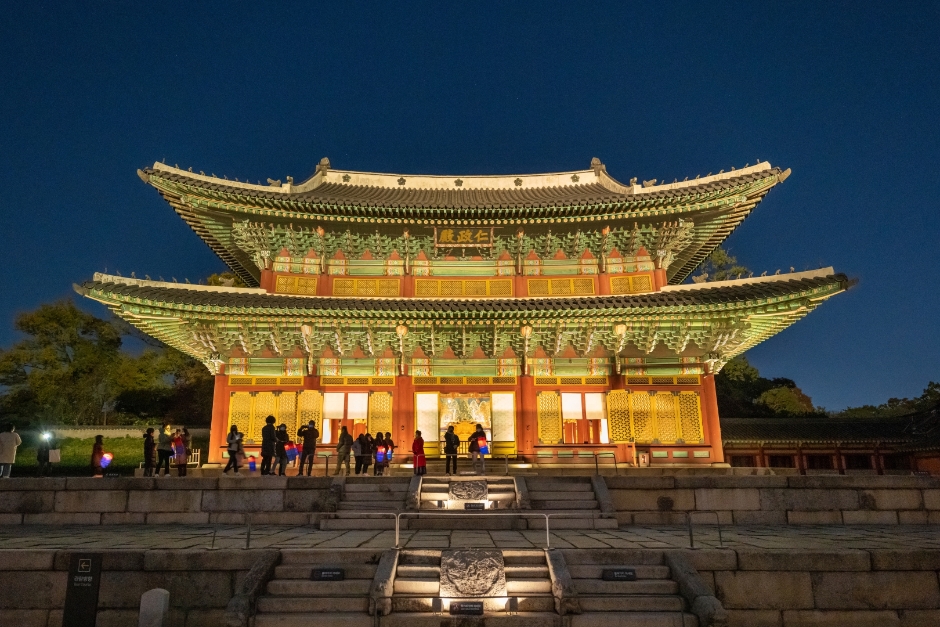

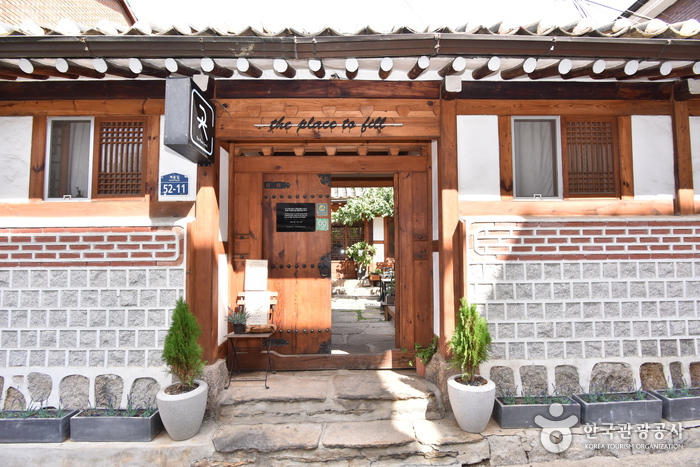
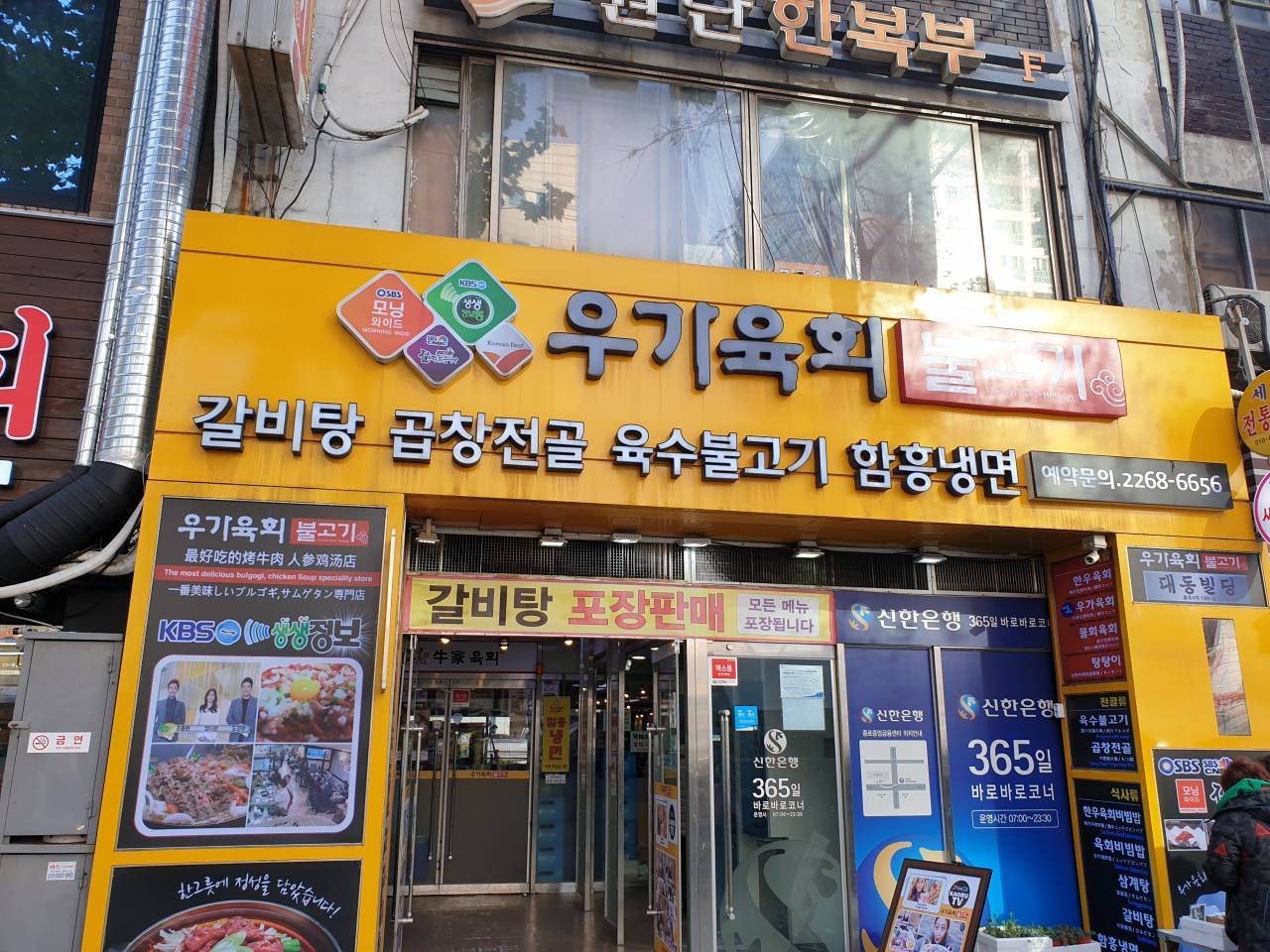
 Español
Español
 한국어
한국어 English
English 日本語
日本語 中文(简体)
中文(简体) Deutsch
Deutsch Français
Français Русский
Русский